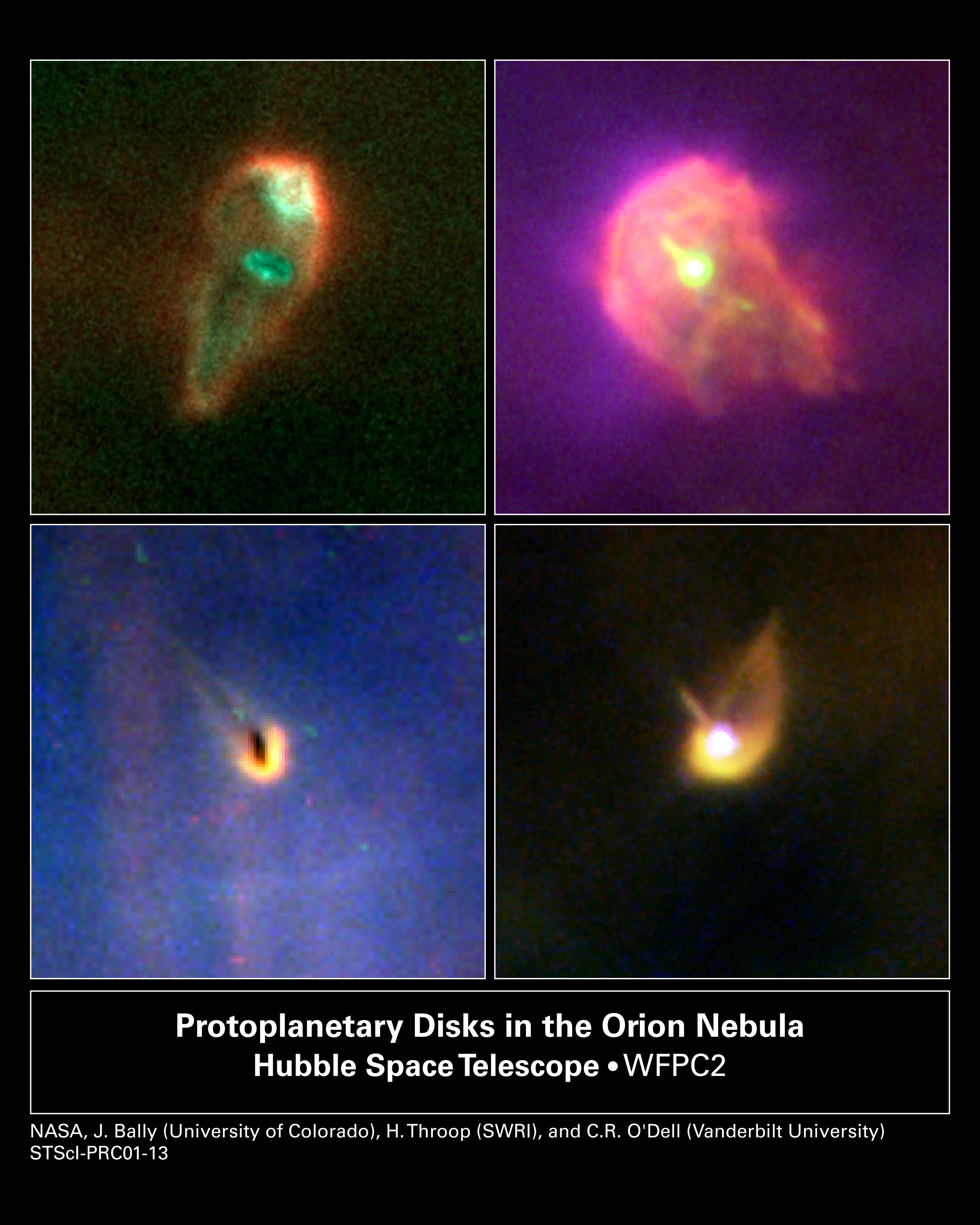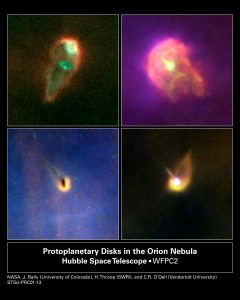
Hubble Views Orion Nebula’s Planetary Nurseries
Planet formation is a hazardous process. These four snapshots, taken by NASA's Hubble Space Telescope, show dust disks around embryonic stars in the Orion Nebula being "blowtorched" by a blistering flood of ultraviolet radiation from the region's brightest star. Within these disks are the seeds of planets. The doomed systems look like hapless comets, with wayward tails of gas boiling off the withering, pancake-shaped disks. The Frisbee-shaped disks, called protoplanetary disks, are wider than our solar system and reside in the centers of the cocoons of gas. These cocoons were formed from material evaporating off the surface of the disks. Evidence from Hubble's Wide Field and Planetary Camera 2 suggests that dust grains in the disk are already forming larger particles, which range in size from snowflakes to gravel. But these particles may not have time to grow into full-fledged planets because of the relentless "hurricane" of radiation from the nebula's hottest star, called Theta 1 Orionis C. In the picture at top left, the disk is the green-colored oval near the center. Radiation from the hot star is heating up the disk, causing matter to dissipate, like steam evaporating from the surface of boiling water. A strong "stellar wind," a stream of particles moving at 4,500 to 8,900 miles per hour (7,200 to 14,400 kilometers per hour), is propelling the material away from the disk. The material is glowing because it is being energized by radiation from the hot star. Located 1,500 light-years away, the Orion Nebula is the nearest "star factory" to Earth. The Hubble pictures were taken Feb. 26, 1998 and Jan. 11, 1999.
- X

























